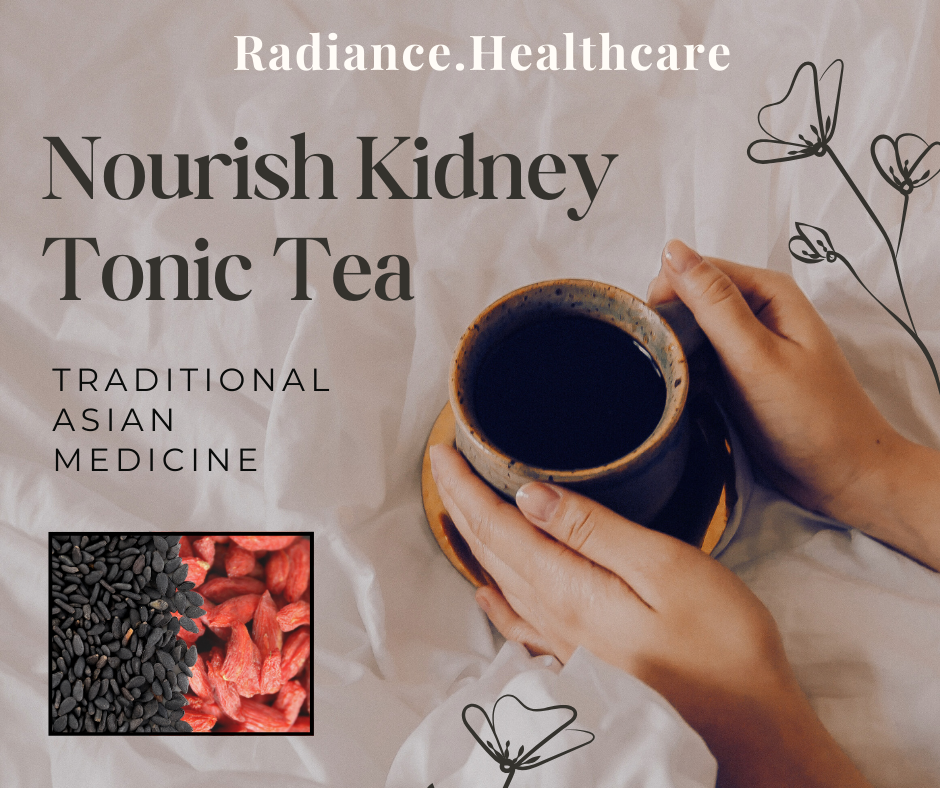Kidney Tonic Tea: Black Sesame + Goji Berry
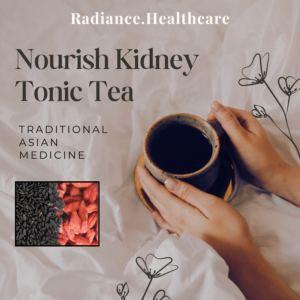
Kidney Tonic Tea: Black Sesame + Goji Berry
Equipment
- 1 Pot or Saucepan
- 1 Fine-mesh strainer or tea filter optional
- 1 Mortar and pestle or spice grinder optional
Ingredients
- 1/2 cup black sesame seeds organic, toasted
- 1/4 cup goji berries organic, rinsed lightly
- 12 cups pure water filtered
Optional Additions
- 3-4 slices fresh ginger (or a small knob grated, organic
- 1 stick cinnamon (or ¼–½ teaspoon of ground cinnamon), organic
- 2-3 whole jujube (red dates) pitted and sliced
Instructions
Toast black sesame seeds
- If using raw seeds, lightly toast them in a dry pan on medium heat (1–2 minutes) until they release a nutty aroma.
(Optional) Lightly Crush the Sesame Seeds
- For a smoother, more integrated flavor, pulse or grind the ½ cup toasted black sesame seeds. This helps release their oils.
- *This will require greater care in stirring while cooking.
Bring Water to a Simmer
- Pour 12 cups of water into a small pot.
- Heat on medium until you see gentle bubbles forming (not a rolling boil).
Add Sesame Seeds & Optional Aromatics
- Stir in the toasted black sesame seeds (crushed or whole) and goji berries
- If you’re adding fresh ginger slices, cinnamon stick, or jujube slices, add them now.
Lower heat to maintain a gentle simmer.
- Simmer for 5 minutes, stirring occasionally to prevent sticking.
Add Goji Berries
- Stir in the ¼ cup goji berries.
- Let the mixture simmer for an additional hour, allowing the berries to plump and release their sweetness.
(Optional) Adjust Consistency
- If you prefer a thicker, soup-like tonic, leave the sesame seeds and other solids in the tea.
- For a clearer, more “tea-like” broth, strain through a fine-mesh sieve into a teapot or mug. Reserve the solids for adding to porridge or smoothies later.
Serve Warm
- Pour into cups and sip slowly, allowing the warming, nourishing properties to support your Kidney system.
- No need for additional sweetener—jujube or goji berries offer a subtle sweetness.
Notes
TCM Notes & Serving Tips
- Frequency: Enjoy 1–2 cups in the morning and/or early afternoon. Avoid late-night consumption if you find it too rich or warming before bed.
-
Personal Constitution:
- If you have a “hot” constitution or are prone to signs of excess heat (e.g., hot flashes, irritability, night sweats), use less ginger/cinnamon, and consider omitting them.
- If you tend to run cold or have low energy, the optional ginger and cinnamon can provide extra warmth and support Kidney Yang.
- Jujube helps boost Qi and can be beneficial if you often feel fatigued or have weak digestion. Just be mindful of your overall sugar intake if you have blood sugar concerns.
Storage
- Refrigerate leftover tea (up to 24 hours) and reheat gently on the stovetop.
- The sesame seeds may thicken the brew upon reheating—add water to adjust consistency as needed.
Key TCM Ingredients & Their Functions
-
Black Sesame Seeds (Hei Zhi Ma, 黑芝麻)
- Color “black” resonates with the Kidney system in TCM.
- Nourishes Yin and Jing (essence).
- Traditionally supports hair health and overall vitality.
-
Goji Berries (Gou Qi Zi, 枸杞子)
- Tonifies Liver and Kidney Yin.
- Supports eye health, energy levels, and resilience.
Optional Additions
-
Fresh Ginger (Sheng Jiang, 生姜)
- Provides gentle warmth; helpful if you tend to feel cold or have weak digestion.
- In TCM, ginger moves Qi and dispels cold, supporting Spleen and Stomach.
-
Cinnamon (Rou Gui, 肉桂)
- Warming herb that can help tonify Kidney Yang and invigorate circulation.
- Particularly supportive during colder seasons or if you have cold limbs/lower back.
-
Jujube (Hong Zao or Da Zao, 红枣/大枣)
- Sweet, nourishing, and slightly warming.
- Helps tonify Qi and Blood, adding natural sweetness without processed sugar.
Unseen Dangers: A Guide to Endocrine (hormone) Disruptors in Your Diet
Endocrine disruptors in food and beverages pose significant risks, interfering with our hormonal systems and impacting health outcomes. These chemicals are present in various forms, from agricultural pesticides to packaging materials. Awareness and understanding of these substances are crucial for making informed dietary choices. Below is a detailed guide to identifying and reducing exposure to these harmful disruptors.
Endocrine Disruptors in Food and Beverages
1. Pesticides and Herbicides
- Glyphosate: Widely used in agriculture, particularly on genetically modified crops like soy, corn, and canola.
- Atrazine: Commonly used on corn crops, known to disrupt hormonal balance in aquatic species and potentially in humans.
- Chlorpyrifos: Used on fruits and vegetables, linked to developmental problems in children.
2. Plasticizers
- Bisphenol A (BPA): Used in the lining of metal food cans and some plastic food containers and water bottles. Avoid canned foods or look for “BPA-free” labels.
- Phthalates: Found in plastic food packaging and can leach into food from these materials. They are commonly used to make plastics more flexible.
3. Artificial Hormones
- Recombinant Bovine Growth Hormone (rBGH/rBST): Injected into dairy cows to increase milk production. Opt for milk and dairy products labeled “rBGH-free” or “organic.”
4. Heavy Metals
- Mercury: Accumulates in fish and shellfish, particularly in larger and older predatory fish like tuna, swordfish, and shark. Limit consumption of high-mercury fish.
- Arsenic: Found in rice and rice-based products due to the way rice is cultivated. Diversify grains and opt for varieties grown in regions with lower arsenic soil content.
- Cadmium: Present in shellfish, liver, and kidney meats. It accumulates in the body over time, affecting kidney function and bone density.
5. Industrial Chemicals
- Polychlorinated Biphenyls (PCBs): Though banned, can still be found in farm-raised salmon. Choose wild-caught fish when possible.
- Dioxins: Formed during industrial processes and released into the environment, accumulating in animal fat. Minimize consumption of animal fats where possible.
6. Mycotoxins
- Zearalenone: Produced by Fusarium fungi, commonly found on corn, cereals, and grains. Can mimic estrogen and cause reproductive issues.
7. Artificial Colorants and Preservatives
- Red No. 3 (Erythrosine): Found in candies, baked goods, and maraschino cherries. Linked to thyroid tumors in rats.
- Butylated Hydroxyanisole (BHA): Used as a preservative in various processed foods including potato chips and preserved meats; considered a likely carcinogen and an endocrine disruptor.
8. Natural Plant Estrogens (Phytoestrogens)
- Soy Products: Such as tofu, tempeh, and soy milk. Contain isoflavones which can mimic estrogen. Consumption should be balanced especially in hormone-sensitive conditions.
9. Perfluorinated Chemicals (PFCs)
- Food Packaging: Often used to make paper and cardboard packaging resistant to grease. Found in microwave popcorn bags and fast-food wrappers.
10. Boar Taint (in pork)
- Skatole and Androstenone: Occur naturally in pork and can act like estrogen. They are more prominent in uncastrated male pigs.
Tips for Minimizing Exposure
- Choose Organic: Where possible, select organic produce and meats to avoid synthetic pesticides and hormones.
- Know Your Sources: Purchase seafood from trusted sources and opt for smaller, younger fish to reduce mercury exposure.
- Prepare Rice Properly: Rinse rice thoroughly and cook in a high water-to-rice ratio to reduce arsenic content.
- Read Labels: Always check food labels for artificial colorants, preservatives, and other additives.
- Limit Processed Foods: These are more likely to contain BPA, phthalates, and other harmful chemicals.
- Store Safely: Use glass, violet or colored glass, stainless steel, or BPA-free plastic for food storage to avoid leaching of chemicals.
This detailed list explains several potential sources of endocrine disruptors in food and beverages, along with practical advice for reducing exposure to protect your health and longevity.
Awareness and careful choices help reduce future exposure to harmful endocrine disruptors, but actively detoxifying these toxins from your body is crucial for restoring hormonal balance. At Radiance Healthcare, we specialize in effective endocrine detox programs that cleanse your body of these chemical intruders, enhancing natural healing and preventing long-term health complications.
Disclaimer: The information in this blog post is provided for general informational purposes only and is not intended as medical advice. For personalized advice or treatment, please register as a patient at Radiance Healthcare, or consult with a qualified healthcare provider for any medical concerns.

The Ancient and Modern Practice of Tongue Scraping: Boost Your Oral Health and Wellness
Introduction to Tongue Scraping
Tongue scraping, a simple yet effective oral hygiene technique, involves the removal of bacteria, toxins, and food debris accumulated on the tongue overnight. Utilizing a metal or plastic scraper (traditionally copper), this practice not only promotes a clean mouth but also enhances overall health.
Historical Roots
Rooted in ancient wisdom, tongue scraping is a traditional practice in Ayurveda and has been used for centuries across various cultures including Europe, Africa, Arabia, South America, and particularly India. Historically, scrapers were crafted from a range of materials like wood, copper, silver, ivory, mother-of-pearl, whalebone, celluloid, and tortoiseshell, reflecting the practice’s integration into daily life and its importance in maintaining oral cleanliness.
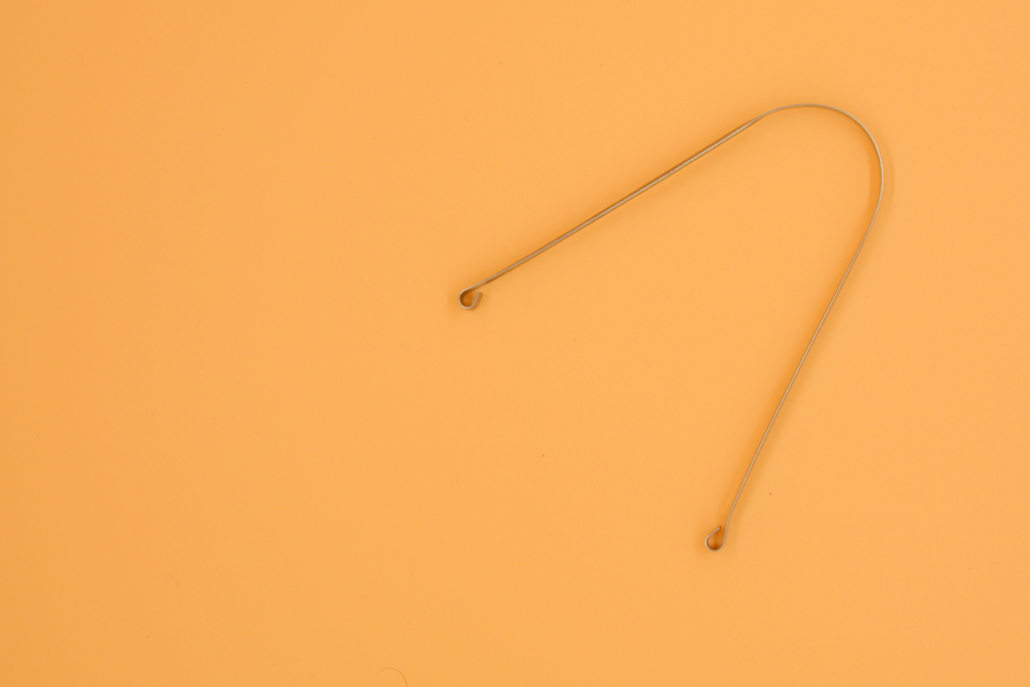
Choosing the Right Product: Copper Tongue Scraper
A copper tongue scraper is recommended due to its natural antibacterial properties. Copper not only effectively removes oral debris but also helps in reducing the microbial load on the tongue, which is vital for maintaining oral hygiene.
Health Benefits of Tongue Scraping
- Enhances Taste: Regular scraping can enhance your taste perception by clearing out taste-dulling debris.
- Reduces Bad Breath: It removes bacteria that contribute to halitosis.
- Prevents Oral Health Issues: By maintaining a cleaner tongue, you reduce the risk of cavities, gum diseases, and infections.
- Detoxification: In Ayurveda, removing ‘ama’ (toxic residue) from the tongue is considered crucial for overall detoxification of the body.
Appropriate Conditions for Tongue Scraping
Ideal for individuals experiencing:
- Bad breath
- A coated tongue
- Loss of taste
- A desire for a more holistic approach to oral hygiene
Potential Risks and How to Avoid Them
- Gag Reflex: To prevent gagging, avoid placing the scraper too far back initially. Start in the middle and gradually move backward.
- Cutting the Tongue: Use gentle pressure and ensure the scraper is smooth with no sharp edges.
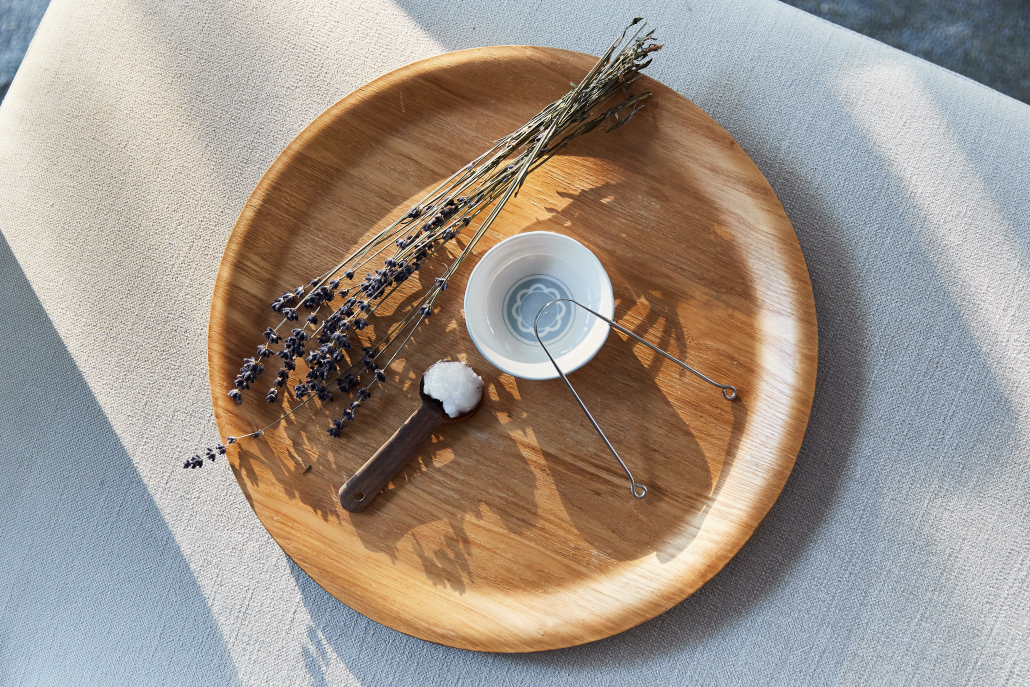
How to Scrape Your Tongue: A Step-by-Step Guide
- Stand in front of a mirror, open your mouth wide, and stick out your tongue.
- Place the scraper at the back of your tongue (or as far as comfortable).
- Gently pull the scraper to the tip of the tongue, removing the coating.
- Rinse the scraper and repeat if necessary.
Frequency of Tongue Scraping
For best results, incorporate tongue scraping into your morning routine, ideally before eating or drinking anything.
Cleaning and Caring for Your Tongue Scraper
After each use, wash the scraper with warm, soapy water. Store it in a clean, dry place to prevent bacterial growth.
Supporting Research and References
- Oral hygiene: a history of tongue scraping and brushing
- The effect of tongue scraper on mutans streptococci and lactobacilli in patients with caries and periodontal disease
- Healthline: Tongue Scraping
- Ayurveda: Tongue and Corresponding Organ Locations
- Impact of tongue cleansers on microbial load and taste
By integrating this ancient practice into your modern lifestyle, you can enhance not only your oral health but also contribute to your overall well-being. Tongue scraping is a testament to how traditional health practices can be seamlessly adopted to support our contemporary health needs, aligning perfectly with holistic health approaches like those offered in our “Radiant Life Training” program.
Disclaimer: The information in this blog post is provided for general informational purposes only and is not intended as medical advice. For personalized advice or treatment, please register as a patient at Radiance Healthcare, or consult with a qualified healthcare provider for any medical concerns.

The Revitalizing Practice of Oil Pulling: Ancient Wisdom for Modern Health
What is Oil Pulling?
Oil pulling, a traditional Ayurvedic remedy, involves swishing oil in the mouth to enhance oral hygiene and overall health. This simple yet effective practice not only cleans the oral cavity but also offers systemic health benefits by detoxifying the body.
Historical Significance of Oil Pulling
Traced back to the ancient Ayurvedic texts, the Charak Samhita and Sushruta Samhita, oil pulling is referred to as ‘Kavala Graha’ or ‘Kavala Gandoosha’. This time-honored method has been used for thousands of years in India, underscoring its enduring belief in promoting health and well-being.

Optimal Oils for Pulling
The best oils for pulling are cold-pressed and include:
- Sesame oil
- Coconut oil
- Sunflower oil
- Olive oil
These oils are chosen for their ability to bind to oral impurities and their intrinsic health properties, ranging from antibacterial to anti-inflammatory effects.
Profound Benefits of Oil Pulling
- Detoxification: Oil pulling is believed to cleanse the entire body by removing toxins and harmful bacteria.
- Oral Health: Regular pulling reduces plaque, prevents oral diseases like gingivitis, cavities, and periodontitis, and leads to healthier gums and whiter teeth.
- Systemic Health: Beyond oral care, it is said to improve longevity, metabolism, and reduce systemic diseases.
- Wellness: Engaging in this practice can stimulate mental clarity and energize the senses.
Addressable Conditions
Ayurveda champions oil pulling as a cure for over 30 systemic diseases, including:
- Dental issues like cavities and gingivitis
- Bad breath and tooth pain
- Systemic issues such as anorexia, chapped lips, dry skin, and even impaired vision
Safety and Risks
While generally safe, oil pulling should be avoided in children under 5 to prevent aspiration. Adults should ensure not to swallow the oil to avoid ingesting the toxins it has pulled from the body.
Step-by-Step Guide to Oil Pulling
- Prepare: Measure 1 tablespoon of oil (1 teaspoon for children over 5).
- Swish: Gently swish the oil in your mouth on an empty stomach for 10 – 20 minutes.
- Dispose: Spit the oil into a trash can to avoid plumbing issues.
- Rinse: Clean your mouth with water and proceed with normal tooth brushing.
Frequency of Practice
For optimal results, oil pulling can be performed up to three times daily, preferably before meals to maximize its detoxifying effects.
Cleaning and Care
It’s essential to use fresh oil for each session and maintain cleanliness to prevent bacterial growth associated with the oil.
Learn More and References
- ScienceDirect: Oil pulling for maintaining oral hygiene – A review
- Healthline: 6 Benefits of Oil Pulling — Plus How to Do It
- PubMed: Oil pulling for maintaining oral hygiene – A review
By embracing oil pulling as part of your daily routine, you engage in a practice rich in tradition and supported by both ancient wisdom and modern science. This aligns seamlessly with our holistic approach at “Radiant Life Training,” where we integrate ancient practices to promote contemporary health and well-being.
Disclaimer: The information in this blog post is provided for general informational purposes only and is not intended as medical advice. For personalized advice or treatment, please register as a patient at Radiance Healthcare, or consult with a qualified healthcare provider for any medical concerns.

The Revitalizing Art of Garshana: A Guide to Dry Brushing
Introduction to Garshana Garshana, commonly known as dry brushing, is a traditional Ayurvedic practice that revitalizes the body by stimulating the lymphatic system through a vigorous massage with wool, raw silk, or cotton gloves. This method not only enhances circulation and detoxification but also promotes skin health by exfoliating dead cells and stimulating new cell growth.
Historical Roots of Garshana Tracing its origins back to Siddha medicine—considered one of the world’s oldest medicinal systems—Garshana was introduced to South India by the revered sage Agastya. This practice is a testament to a lineage of wellness that may date back as far as 8,000 years. Across cultures, similar techniques have been employed for centuries; Ancient Egyptians used natural enzymes for skin care, the Chinese utilized loofahs made from dried gourd fibers, and Greeks and Romans opted for strigils combined with olive oil to cleanse and invigorate their skin before bathing.
Recommended Tools for Garshana To engage in Garshana, one may use:
- Raw silk gloves: Ideal for their gentle touch, recommended for Vata and Pitta body types.
- Wool gloves: Provide a firmer texture suitable for Kapha types.
- Terry gloves and copper brushes: Alternatives that cater to different sensitivities and preferences.
Health Benefits of Dry Brushing Engaging in Garshana can lead to multiple health benefits, including:
- Enhanced blood circulation and lymphatic drainage.
- Reduction of cellulite and expulsion of body toxins (ama).
- Increased energy and improved immune system function.
- Relaxation of the mind and stimulation of the body’s hormonal and oil glands.
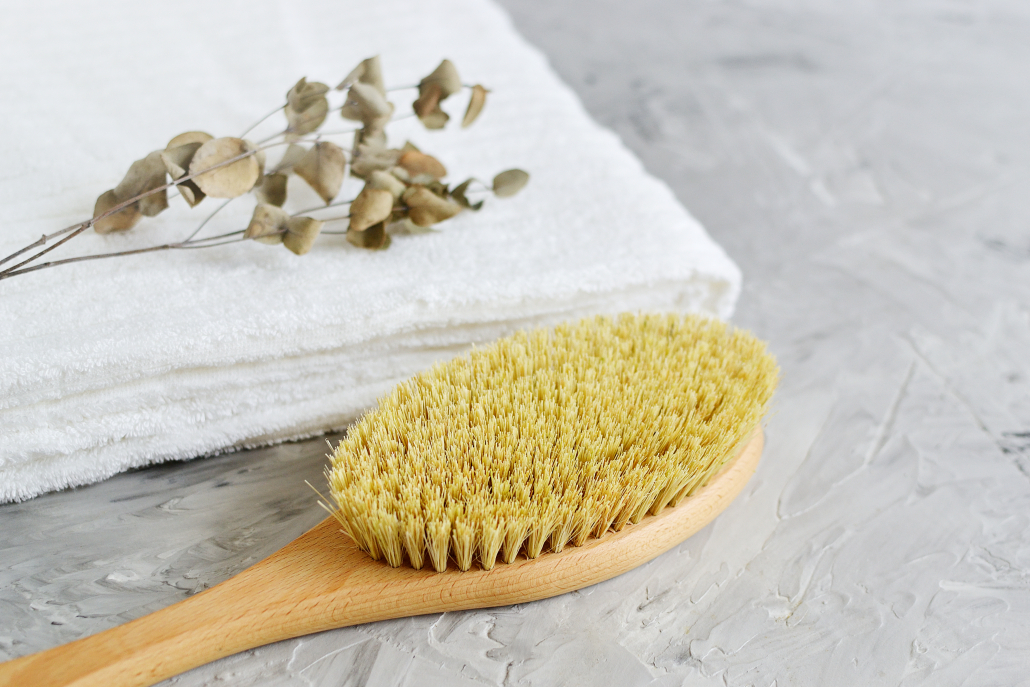
Ideal Conditions for Dry Brushing Dry brushing is particularly beneficial for those experiencing:
- Muscle stiffness and aches.
- Neuralgia and fatigue.
- Poor blood circulation and digestive issues.
Precautions and Contraindications While beneficial for many, Garshana should be avoided on sensitive skin or areas affected by eczema, psoriasis, sunburn, or open wounds to prevent irritation.
How to Perform Garshana For optimal results, follow these steps:
- Preparation: Wear suitable gloves and start with the feet.
- Technique: Use long, upward strokes towards the heart, integrating circular motions at joints like ankles and knees.
- Coverage: Include all body parts, from limbs to the abdomen, back, and neck, finishing with gentle motions on the face and ears.
- Pressure: Apply light pressure on delicate areas and firmer pressure where the skin is thicker.
- Duration and Frequency: Typically, 10-15 minutes per session, varying from daily to a few times per week depending on your Dosha type.
- Timing: Best done in the morning, before showering or undergoing further Ayurvedic treatments.
Care for Your Tools Maintain the efficacy of your gloves and brushes by washing them regularly, ensuring they are dry and clean for each use.
Further Reading and References For those interested in deepening their understanding of Garshana and its benefits, consider the following resources:
- The Encyclopedia of Ayurvedic Massage by Dr. John Douillard.
- Healthline’s overview on Dry Brushing
- Garshana – Ayurvedic Dry Brushing by PAAVANI Ayurveda.
By integrating Garshana into your daily routine, you embrace an ancient tradition that promotes not only physical cleansing and rejuvenation but also a harmonious balance between mind, body, and spirit. This guide aims to make the practice accessible, practical, and beneficial to your overall well-being.
Disclaimer: The information in this blog post is provided for general informational purposes only and is not intended as medical advice. For personalized advice or treatment, please register as a patient at Radiance Healthcare, or consult with a qualified healthcare provider for any medical concerns.

Nasal Irrigation: A Guide to Neti
Introduction to Neti
Neti is a traditional nasal irrigation technique that uses a saline solution to cleanse the nasal passages. It is a practice rooted in Ayurveda, an ancient Indian system of medicine that emphasizes wellness informed by and in balance with nature. By gently flushing the sinuses, neti can alleviate various nasal conditions and improve respiratory health.
Historical Roots
The practice of neti has been a cornerstone of Ayurvedic medicine for centuries, designed to enhance breathing and support the natural cleansing processes of the respiratory system. It is often used as a preventative measure to maintain nasal health and as a therapeutic intervention for respiratory ailments.
Essential Neti Products
To perform neti safely and effectively, a few products are essential:
- Neti Pot: A small, specially designed pot used for nasal irrigation.
- Saline Salt Packs: These are pre-measured and mixed to ensure the correct isotonicity.
- Distilled Water: Ensures that the irrigation solution is free from contaminants.
- Tissues: For gently drying the nose after irrigation.
Benefits of Nasal Irrigation
Practicing neti can offer numerous health benefits:
- Cleanses the Nasal Passages: Removes dust, pollen, and other allergens.
- Reduces Mucus Buildup: Helps clear out blocked nasal passages.
- Decreases Inflammatory Agents: Reduces the presence of elements that cause nasal and sinus inflammation.
- Enhances Natural Cleaning: Improves the nasal cavities’ self-cleaning capabilities.
- Restores Breathing Ease: Opens the nasal passages to ease breathing.
- Moisturizes: Helps maintain moisture in the nasal cavities.
- Reduces Medication Dependence: Frequent users may find a reduced need for nasal sprays and other medications.
Appropriate Conditions for Neti Use
Neti is particularly beneficial for:
- Sinus Congestion and Infections
- Allergic Rhinitis
- Common Colds
- Post-Nasal Drip
- Recovery from Nasal Surgery
- Chronic Rhinosinusitis
Potential Risks and Precautions
While neti is generally safe, it is crucial to follow proper guidelines to avoid risks:
- Avoid in Infants/Small Children: Their nasal passages are too delicate for this practice.
- Sterile Water is Mandatory: Use only distilled, sterile, or previously boiled water to prevent infections.
- Watch for Protective Mucus Removal: Excessive use might strip away protective mucus.
- Contraindications: Avoid neti if you have ear infections, blocked ears, recent facial trauma or sinus surgery.
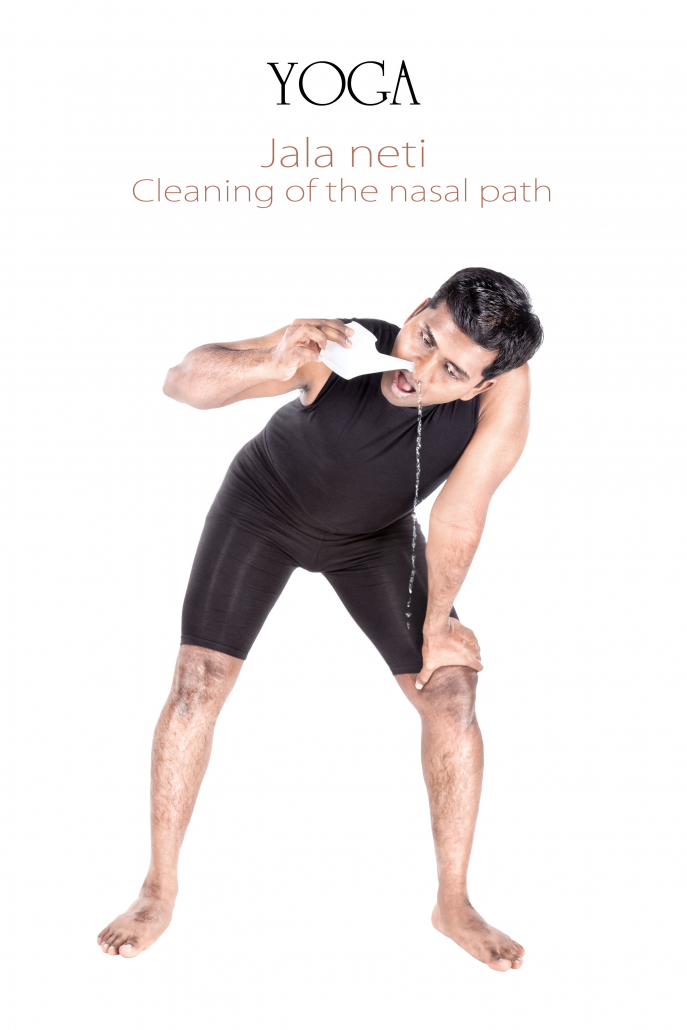
Step-by-Step Neti Guide
- Preparation: Wash your hands thoroughly. Mix the saline solution in a clean neti pot with lukewarm, sterile water.
- Irrigation: Lean over a sink, tilt your head to one side, and gently insert the neti pot’s spout into the upper nostril. Allow the solution to flow through and exit the opposite nostril. Use about half the solution.
- Completion: Gently blow your nose without complete closure to avoid pressure on the eardrums. Repeat the process on the other nostril. Discard any remaining solution and clean the neti pot.
Safety Guidelines
- Water Quality: Never use untreated tap water. Boil tap water for at least five minutes if distilled water isn’t available.
- Personal Use: Do not share your neti pot to prevent cross-contamination.
- Regular Cleaning: Follow a strict cleaning regimen for your neti pot. For copper or ceramic pots, boil for 10 minutes every three months; or for plastic nasal irrigation devices, replace every 3 months.
- Saline Solution: Use only isotonic or hypertonic saline solutions that are pH-balanced and preservative-free. Avoid homemade salts due to potential impurities.
Recommended Frequency
Consult with a healthcare provider for personalized advice, but generally, once daily is beneficial, particularly during allergy seasons or after exposure to irritants.
Further Reading and References
- Saline Nasal Irrigation for Upper Respiratory Conditions – American Family Physician
- Effective Neti Pot Usage – Healthline
- Nasal Irrigation Guidelines – NeilMed
Conclusion
Neti is a valuable addition to anyone’s health regimen, particularly for those struggling with nasal and respiratory issues. By incorporating this ancient practice into your daily routine, you can enjoy the profound benefits of clearer breathing and improved nasal health. Always ensure to follow the safety guidelines to maximize benefits and minimize risks.
Disclaimer: The information in this blog post is provided for general informational purposes only and is not intended as medical advice. For personalized advice or treatment, please register as a patient at Radiance Healthcare, or consult with a qualified healthcare provider for any medical concerns.

The Ancient Ayurvedic Practice of Abhyanga Massage
What is Abhyanga?
Abhyanga is a transformative full-body massage using warm herbal oils tailored to individual body types or doshas. This practice is an integral part of Ayurveda, the ancient Indian system of medicine that emphasizes balance in bodily systems through diet, herbal treatment, and yogic breathing.
Historical Roots
Originating from the Siddha medicine system, brought to Southern India by the sage Agastya, Abhyanga is believed to be one of the oldest healing therapies—dating back as far as 8,000 years. This method has influenced various global healing practices in countries like Greece, Indonesia, China, and Persia, highlighting its universal appeal and adaptability.
How to Prepare for Abhyanga
Products Needed:
- ½ cup of your chosen oil
- Squeeze bottle for oil
- Optional: Essential oils and herbs for enhanced benefits
Step-by-Step Guide
- Warm the oil in a squeeze bottle by placing it in hot water.
- Begin by applying oil to the entire body, ensuring enough for easy glide over the skin.
- Use rhythmic strokes, adjusting pressure as needed for different areas: stronger on feet and toes, lighter on the face and abdomen.
- Include circular motions at joints and long strokes on limbs for optimal lymph flow and flexibility.
- After massaging, relax for 10 minutes to allow the oil to penetrate deeply, then follow with a warm bath or shower.
Selecting Oils by Dosha
- Vata (dry skin): almond, sesame, olive
- Pitta (sensitive skin): coconut, sunflower
- Kapha (oily skin): sunflower, mustard
Essential Oils for Dosha Balance
- Vata: Warm, grounding scents like cardamom and orange
- Pitta: Cooling oils such as sandalwood and lavender
- Kapha: Stimulating aromas like eucalyptus and rosemary
Benefits of Abhyanga
Research and ancient texts, such as the Astanga Hridaya by Acharya Vagbhata, suggest numerous benefits:
- Enhances longevity and nourishes the body
- Improves flexibility, sturdiness, and lymph flow
- Reduces effects of aging and fatigue
- Alleviates nervous system afflictions, improving mental clarity and vision
- Supports better sleep and overall vitality
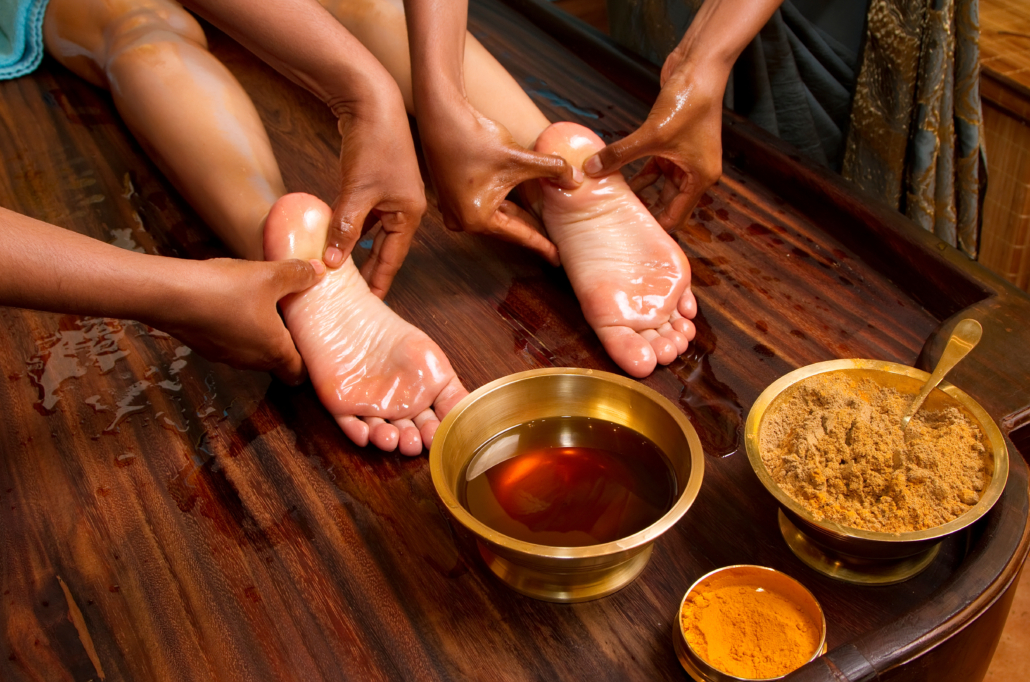
Ideal Conditions for Abhyanga
This massage is particularly beneficial for:
- Stress and fatigue
- Muscular aches and joint stiffness
- High blood pressure and various skin conditions
Contraindications
Avoid Abhyanga if you have:
- Recent fractures or severe injuries
- Skin infections or severe chronic illnesses
- Specific conditions such as during pregnancy
Timing and Frequency
- Duration: 15-35 minutes per session
- Frequency: Daily, ideally before bathing
- Best Time: Morning to invigorate or evening to relax
References and Further Reading
- Douillard, Dr. John. The Encyclopedia of Ayurvedic Massage. North Atlantic Books, 2004.
- The Art & Benefits of Abhyanga Massage
- Effects of Abhyanga on the Autonomic Nervous System
- Ayurvedic Abhyanga Massage and Stress
Disclaimer: The information in this blog post is provided for general informational purposes only and is not intended as medical advice. For personalized advice or treatment, please register as a patient at Radiance Healthcare, or consult with a qualified healthcare provider for any medical concerns.


